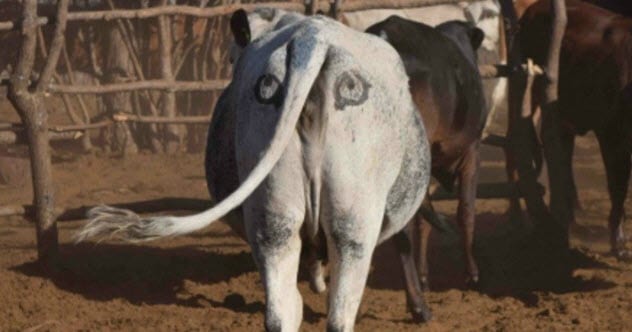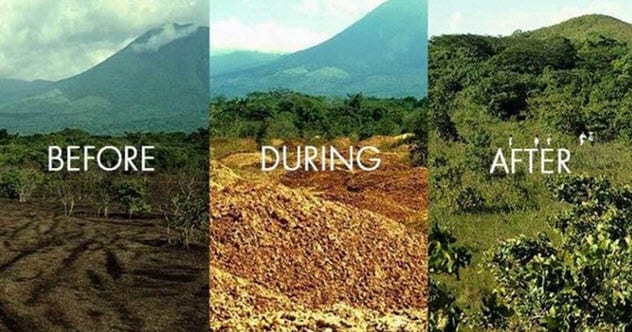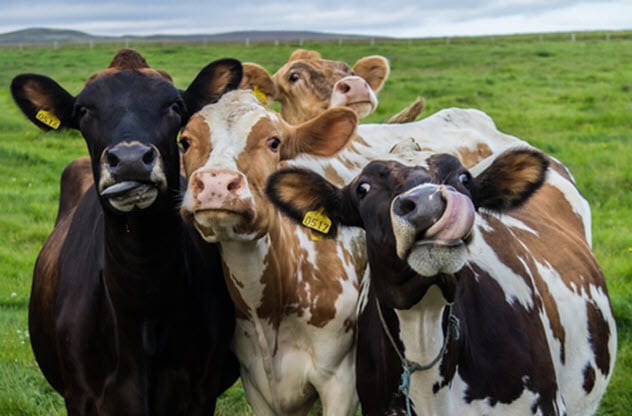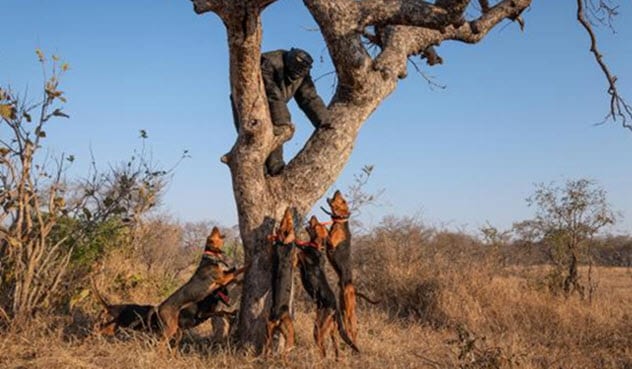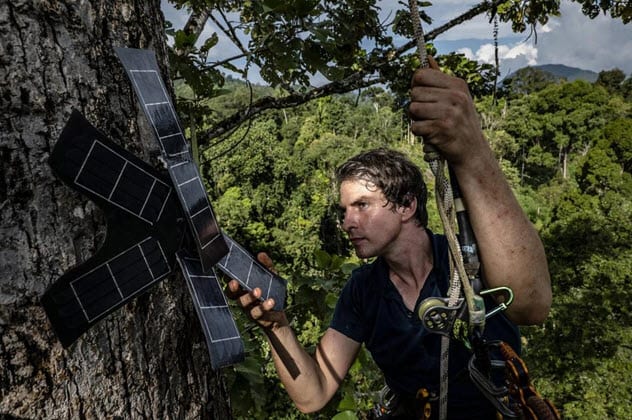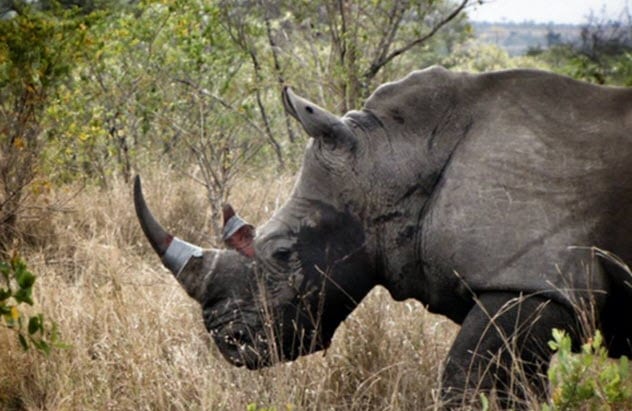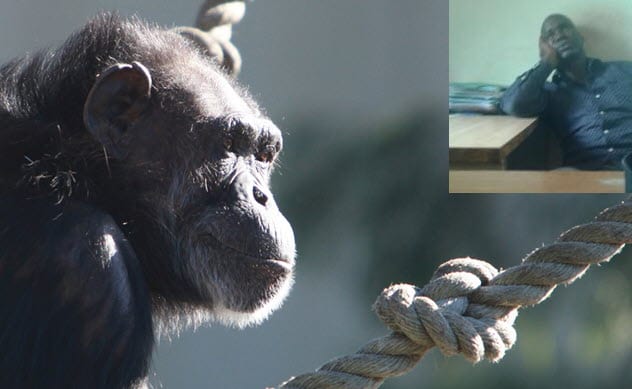They leave cell phones in the woods to catch loggers and turn rhino horns pink with poison. Then there is EAGLE, the only eco-group that takes down the bad guys James Bond–style. All right, maybe not entirely like 007, but they are still pretty badass. 10 Environmental Disaster Time Bombs
10 Saving Water By Turning It Into Art
Fine living often comes at the expense of the environment. But a few years ago, a design student named Simin Qiu proved that taps can be upper-crust utensils and save water. While the faucet itself is chic, the real stunner is the water. While pouring, it looks like glass with patterns. Qiu achieved this by running the water through a double turbine and nozzles capable of spinning different patterns. The faucet also limits the flow by 15 percent. Considering how much taps are used each day, this feature saves a lot of water. Additionally, the award-winning “Swirl Faucet” keeps the temperature steady which avoids unnecessary heating costs.[1]
9 Saving Lions By Painting Cows
Antelope are swift. Lions and cows not so much. For this reason, the big cats are increasingly looking to buy steak. But the farmers are not selling. Instead, they shoot any lions that kill livestock or plainly any lion they see. There is a problem with that—wild African lions are endangered. In 2015, desperation led to innovation. Conservationists started to paint the butts of cows. They took inspiration from two facts. First, lions are ambush hunters. These predators often give up the hunt the moment they realize that their cover is blown. Second, butterflies have wing patterns with fake eyes to look more “aware” of anything that might be trying to eat them. An experiment in Botswana suggested that these “butterfly eyes” might discourage lions from an attack. A herd of 62 cattle was followed for 10 weeks. A third of them grazed while fake eyes on their bums glared at the world behind them. During that time, three cows were killed but none of them were the marked ones.[2]
8 Letting Grannies Count Toxic Snakes
In New Caledonia, tourists love swimming near the city of Noumea. The bay is also home to sea snakes. Researchers wanted to better understand the reptiles in order to protect them (and people from getting fangs in unspeakable places). Watch this video on YouTube After studying all species for 15 years, the focus switched to one deadly customer. The greater sea snake is a 1.5-meter (4.9 ft) ribbon of venom. The survey was heartening. Only around 10 were spotted every year. But the numbers changed dramatically when a group of snorkeling seniors got wind of the project. The seven women in their sixties and seventies were frequent swimmers at the bay. They offered to photograph any greater sea snake they saw. After receiving the green light, the grandmothers swam with the reptiles for years. Their work was groundbreaking.[3] The seniors captured unknown breeding behavior and hundreds of the toxic snakes. This massive population proved that the species was not aggressive. Countless swimmers visit the area, but nobody has ever been bitten.
7 Stalking Fish With Another Fish
The stalker is not a normal fish. Wiggling through the waters off Fiji, this robot rubs shoulders with shoals and they cannot tell the difference. The critter is called SoFi—or more adorably, the Soft Robotic Fish. Watch this video on YouTube It was created by MIT to study fish without disturbing them. As pollution and overfishing decimate the oceans, time is running out to gather knowledge about vulnerable species. But a scuba diver with a notepad is not going to get up close and personal with fish. This is where SoFi can help. The lifelike robot can record videos of natural behavior, the kind that rarely happens when humans are around. Besides spying on the reef crowd, SoFi also allows an accurate look at the health of the marine ecosystem. In fact, the wobbly wonder is doing such a good job that shoals of SoFis might monitor the ocean’s well-being one day.[4]
6 Growing A Monster Jungle From Orange Peels
When Princeton scientists approached a fruit company in the 1990s, they wanted to make the land more fertile. They chose Del Oro, a juice company in Costa Rica. If Del Oro donated a part of its property to a nearby reserve, they could use the land as a free dumping site for all their orange peels. The company agreed. Del Oro dumped 12,000 tons before a rival company interfered. TicoFruit claimed that the reserve was being defiled, and Costa Rica’s Supreme Court agreed. It did not seem to matter that the soil was so lifeless that it could not be defiled, even if Del Oro tried. But when the gavel came down, the experiment ended. In 2013, a Princeton scientist was visiting Costa Rica for other reasons when he decided to check on the dumping site. He found something shocking. The soil had become insanely fertile. He could not find the giant sign that marked the site because it was overgrown with vines. (They finally found it years after his visit.) The dead land was now a virile jungle. One fig tree was so thick that three people had to link together to hug the trunk.[5] Nobody had expected this level of success. Even more mysterious was how the humble orange peel had turned things around so quickly. Indeed, Del Oro had only dumped their waste for two years. Then the site was left alone for 16 years. The speedy recovery was inexplicable—and probably the greenest defilement on record. 10 Weird Environmental Issues With Serious Impacts On Wildlife
5 Making Cows Burp Seaweed
Cows are burping massive amounts of methane. This potent greenhouse gas is a natural part of their digestion. They swallow food, burp it back up, and then chew the cud before swallowing it again. Unfortunately, cows burp countless times a day and Planet Earth has a lot of cattle. A lot. When a cow munches, an enzyme in their gut produces the methane. After trying several things, researchers found that seaweed made the enzyme a bit lazy. Which was great. The less active it was, the less methane the enzyme was likely to cough up. One of the most remarkable reductions was seen when scientists added a mere 2 percent of seaweed (a type called Asparagopsis taxiformis) to the animals’ regular feed. The cows still burped up their food to chew, but it happened less and the methane dropped by 99 percent.[6]
4 Hunting Poachers Like Foxes
The Kruger National Park is South Africa’s flagship reserve. Sadly, most rhinos that are poached are killed inside this park or the surrounding game farms. In the past, tracker dogs were used, but they stayed on leads. This slowed the chase, and too many poachers escaped. Then the staff heard about coonhounds in Texas. This bloodline was bred for generations to be aggressive and to run in packs after escaped inmates. They ran the men down like foxes. The South Africans liked the idea of free-running dogs but not the fact that they were so aggressive. One demonstration left a heavily padded volunteer badly bruised.[7] The Texans complied and retrained some of their best dogs not to bite. The pack was then flown to South Africa. Scarcely had they landed when a call came in that a rhino had been killed. The dogs were released from helicopters and caught the poachers. The next day, they caught some more. The day after that, two more. Since then, the coonhounds have caught 54 percent of poachers that enter the park. (Previously, it was more like 3 percent.)
3 Leaving Cell Phones In The Forest To Catch Loggers
Illegal tree loggers are swift and sometimes armed. In places where the local rangers are too scared or understaffed to deal with the problem, they can now look forward to catching thieves with an unusual surveillance system. Topher White is a conservation technologist who rigs treetops with old cell phones and AI software. His California nonprofit, Rainforest Connection, has an annual budget of over $1 million, thanks to wealthy donors like Google and Huawei. By 2019, his units hugged treetops in several countries. Combined, these contraptions listened to a forested area of 2,590 square kilometers (1,000 mi2). The cell phones are tweaked to detect noises from as far away as 1.6 kilometers (1 mi). The software then filters the feed in real time to look for sounds of logging. Once it picks up on trucks, chain saws, or trees splintering, the authorities are instantly alerted via an app.[8] This quick response has brought success. A pair of prolific Peruvian loggers was recently arrested. In Sumatra, illegal cutting slowed dramatically after Rainforest Connection strung the trees of a severely affected island.
2 Serving Up Poisoned Rhino Horns
There are rhinos in South Africa with pink horns. When poachers see this, they know that the product is spoiled. Rhinos are slaughtered in record numbers each year for traditional Eastern medicine. But a spice that promises bouts of diarrhea, vomiting, and stomachache will cause the loss of customers. These are the symptoms that come with eating pink rhino horns. In 2013, wildlife managers walked into a store. They purchased over-the-counter dip for ticks and mixed it with pink dye. The poison was then injected into the hood ornaments of 100 rhinos.[9] The project is entirely legal. Those involved also played open cards with poachers and consumers by launching a media campaign to warn them. Reserves posted warning signs along their own fences, too. The pink toxin can be detected by airport scanners—even when the horn is already ground into a powder.
1 Going Undercover Like Nobody’s Business
The EAGLE Network is an eco-group. However, they do things differently. They do not march and wave placards at meat-eating people. They have zero interest in opening sanctuaries, educating the public, or tweaking policies. Instead, EAGLE is devoted to law enforcement. In fact, this is the world’s only nongovernmental enforcement agency. They excel at undercover work and gathering evidence. In 2015, they took down Ansoumane Doumbouya, the top wildlife official in Guinea. For years, he illegally sold the very animals he was supposed to guard, especially great apes. EAGLE members posed as buyers and built the case. Thanks to their work, Interpol and Guinean authorities had enough dirt on Doumbouya to arrest him. The moment was a big one. As many as 3,000 of Guinea’s wild apes are trafficked every year.[10] This avalanche of primates leaving the country is mainly due to corruption. Removing a powerful player like Doumbouya was a step in the right direction. For EAGLE, it was not the first step, either. Over 1,000 arrests across the world have been spearheaded by this group. 10 Problems With the Green Agenda Read More: Facebook Smashwords HubPages

